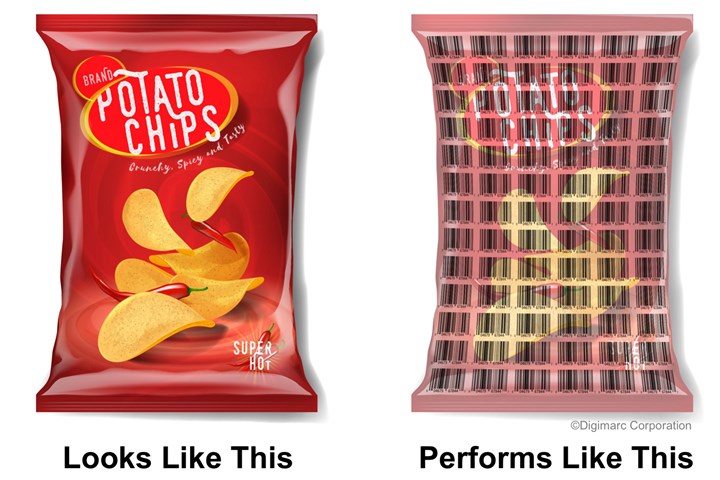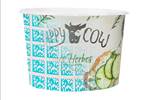Canadian Project Shows Digital Watermarks Aid Sortation of Flexible Packaging
First North American demo of “invisible” digital watermarks for mixed-waste plastics sortation proves the technology’s effectiveness with films and flexibles.
Share

Covert digital watermark technology from Digimarc was shown in a Canadian pilot project to improve sortation of flexible packaging in mixed waste. (Photo: Digimark Corp.)
A pilot project in Canada demonstrated that “covert digital watermarks” (almost imperceptible to the naked eye) can dramatically improve sortation of films and flexible packaging, which cannot be handled effectively by conventional optical sortation technology. That’s the report from Digimarc Corp., Beaverton, Ore., which worked with Canada’s Circular Plastics Taskforce (CPT), participating converters and Pellenc ST, a French producer of intelligent optical sorting equipment and connected services (U.S. office in N.Y.C.). Accuracy of detection and sorting was 99% for films and flexibles constituting a mixed-waste sample that is “characteristic of Canadian conditions,” according to Digimarc. “Remarkably, the results show consistent behavior no matter the type of material used, the form factor or the type of commingled waste.” Starting next year, CPT aims to implement the technology in Canadian separation facilities.
Digimarc Recycle technology involving covert digital watermarks either printed on packaging or molded into the surface of rigid plastics has been used in large-scale sorting assessments over the past year, most notably as part of the HolyGrail 2.0 cross-industry initiative in Europe driven by AIM—European Brands Association and the Alliance to End Plastic Waste. The Canadian project was the first in North America. Using Digimarc Recycle technology, the covert digital watermarks can be read by a suitably programmed optical scanner that is interfaced with a cloud-based repository of product attributes such s brand, SKU, product variant, packaging composition, food/nonfood use, etc. The same information can be used to provide product-specific and location-based disposal instructions from the brand owner directly to consumers. Scannable data in the digital watermarks also can provide a comprehensive view of the post-purchase product journey for Producer Responsibility initiatives.
Related Content
-
Foam-Core Multilayer Blow Molding: How It’s Done
Learn here how to take advantage of new lightweighting and recycle utilization opportunities in consumer packaging, thanks to a collaboration of leaders in microcellular foaming and multilayer head design.
-
Breaking News From NPE2024
Here is a firsthand report of news in injection molding, extrusion, blow molding and recycling not previously covered.
-
Film Extrusion: Boost Mechanical Properties and Rate of Composting by Blending Amorphous PHA into PLA
A unique amorphous PHA has been shown to enhance the mechanical performance and accelerate the biodegradation of other compostable polymers PLA in blown film.













